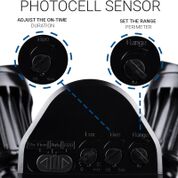How to Choose the Most Efficient LED Lights for Your Business

When you upgrade your commercial lighting to LED, you can enjoy a variety of cost-saving and light-enhancing benefits. Even so, not all LED lights are the same, so here are a few things to keep in mind and consider while you're shopping. Consider Which Areas Need the Most Light As you start shopping for new LED tube lights and other bulbs, keep in mind this will be a cost- and energy-saving investment. While LED lights have become incredibly more affordable over the last few years, if you change all of the light bulbs in your business at once it can be a considerable up-front investment. If you’re not ready to go all-in on LEDs just yet, consider the areas where you use your lights the most and start there. Since these are the areas that have the lights on most often, you’ll see an impact on your energy bills after the switch and you can put those savings toward investing in LED lights for other areas of your business. Pay Attention to Lumens When shopp




